Roasted Rockfish with Black Bean, Garlic and Ginger Sauce
For most of my life, I’ve lived in places which gave me access to plenty of wonderful seafood. From my early childhood in Bangkok and Singapore, I remember acquiring the love of seafood from my favorite uncle, Prarop, and my mother, Pranee. Seldom would a week go by without fish, mussels, clams, crab or shrimp being offered at the dinner table. We would often go to restaurants which featured huge tanks of live fish, shrimp, lobster and other sea creatures, select what we wanted and cooks would prepare them. It just didn’t get any fresher than that.
After we moved to California, we had family outings at the coast where we would gather mussels in the wild, each of us wielding screwdrivers and prying them loose from their rocky moorings. We’d steam them right on the beach and dip them into a sauce made from fish sauce, sliced chilis, lime and shallots.
When I was in high school and we moved to Houston, Texas, my uncle Tamasak would drive down from Sulphur Springs, near Dallas, with his family to visit us. We would all pile into his car and go down to Seabrook to catch blue crab. We’d also visit the shrimp boat docks and buy inexpensive shrimp, glistening with their heads on and some still writhing on huge tables of ice, to fill coolers in the trunk so we could take them home to freeze.
With that kind of childhood, it’s no wonder that as an adult, I enjoy fishing and crabbing so much. And not to mention bringing the catch home to cook for my family. My enthusiasm for fishing and crabbing is tempered only by the concern that my family may tire of seafood whenever a weekend rolls around and I’m anxious to get out of town and head to the ocean or lakes to fish.
I went fishing in search of the elusive surf perch this weekend at Cape Kiwanda, just north of Pacific City. On some stretches of beach in Oregon you’re permitted to drive right on the sand. Finding access that’s suited to your vehicle, however, can take some time. I had scouted the area around Bob Straub State Park in Pacific City, and one of my fishing guidebooks said this stretch of Kiwanda Beach was productive for surf perch, especially at the section where a finger-like peninsula shelters Nestucca River and Nestucca Bay. You can drive along this three-mile stretch of beach, but there’s only one catch: a large dune you must cross at the end of Pacific Avenue to reach the beach. I made it halfway up the dune when my all-wheel-drive Honda Element began to bog down in the soft sand. I backed off the dune — better safe than sorry — and I headed back into Pacific City to consult with the local bait shop about other beach access. The owner told me that just north of Cape Kiwanda, a thumb-like rocky formation that juts out into the ocean from the beach, were a few places that you could drive onto the beach from the safety of paved roads that ended in rocks and gravel. He said right off the first one of these roads was a fishing hole near a formation of smaller rocks that jut into the ocean. Since it was low tide, I should be able to cast out to these rocks in search of rockfish, or greenling. So I donned my waders, got my gear set up and waded into the surf. I was switching back and forth between clam necks and sand shrimp for bait and used a 4-ounce weight on my surf rod to get my hook out near the rocks. Sure enough, within a couple of hours, I had reeled in two nice-sized black rockfish, between 1 and 2 pounds each. They’re good fighters, so I was taking care not to lose my footing in the surf. Charles had reeled in one of these suckers on his first jetty-fishing adventure with me to Garibaldi and Barview Jetty, which is inaccessible until September because they’re adding more giant boulders to extend and fortify the jetty.
By lunchtime, I was headed home with two black rockfish in the cooler, and thinking back to those childhood days in Thailand and Singapore and remembering being served a dish of white fish with a fermented dried black bean sauce at my uncle Prarop’s house. After Mom got home from bingo and opened the cooler and gawked in amazement at the size of the fish, I had to consult her on fermented black beans. It turns out that they’re not really black beans at all, like the kind you think of with Mexican cooking. Fermented black beans, also called salted dried black beans, are actually soybeans that have been dried and fermented with salt and usually ginger. They’re used frequently in Cantonese cooking, especially with crab and shrimp, clams and mussels.
We headed to one of our local Asian grocery stores, Wing Wa, where Mom asked the clerk in Chinese for help finding the beans. She took us down an aisle and pointed to the neatly arranged cardboard round containers from China on the top shelf. Inside, the black beans were sealed in plastic. At home, I took a whiff — earthy and salty and savory. Just perfect for the black rockfish, I thought. Now to clean my catch, put one fish in the freezer and fillet the other, then get dinner ready. When it was nearing time for dinner, I thought it was a good sign that Charles and Mom came downstairs and asked what the aroma coming from the kitchen was.
Roasted rockfish with black bean and garlic sauce, served with steamed white rice and blanched baby bok choy.
Roasted Rockfish with Black Bean, Garlic and Ginger Sauce
- 1 -2 rockfish fillets, depending on the number of people you’d like to serve (if you can’t find rockfish, substitute other firm-fleshed white fish like red snapper, tilapia or even halibut)
- 2 tablespoons (30 ml.) fermented black beans
- 2 tablespoons (30 ml.) mirin (Japanese rice wine vinegar)
- 2 tablespoons (30 ml.) hot water
- ¼ cup (60 ml.) ginger, peeled and julienned
- 2 tablespoons (30 ml.) finely chopped garlic
- 2 tablespoons (30 ml.) olive oil
- 2 tablespoons (30 ml.) peanut or other cooking oil
- 3 tablespoons (45 ml.) sweet dark soy sauce
- Salt for seasoning fish
- Rinse and pat dry fish fillets. Place them in a dish, coat them with olive oil, season with a little salt and set aside.
- In a small bowl, combine black beans, mirin, hot water and let soak for 10 minutes.
- In a small saucepan, heat peanut oil or cooking oil over low heat and sweat the garlic and ginger. (Note: You do not want to brown the garlic and ginger; just sweat it for a couple of minutes.)
- Add the black beans and the liquid they’ve been soaking in. Add dark soy sauce, stir thoroughly to incorporate, cook a couple of minutes, turn off heat and set aside.
- Put the fish skin-side down in a roasting pan that’s been coated with a little oil and place in oven about four or five inches under broiler on high heat for 5 to 10 minutes until fish is cooked. The amount of time will depend on how thick the fish fillets are.
- When fish is done, place on serving platter, spoon the black bean and garlic sauce over the fish and serve immediately.
You can serve this easy dish with steamed white rice and simple vegetables, like blanched baby bok choy dressed with a little ponzu sauce and sesame oil.
Enjoy!
— Vic
Category: Seafood
About the Author (Author Profile)
Victor Panichkul is a journalist and writer by training; a cook, wine lover and photographer by passion; and a lover of the outdoors since moving to Oregon more than 10 years ago. He is a native of Bangkok, Thailand.







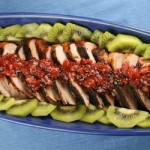

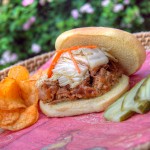



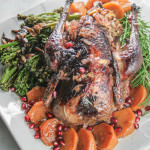

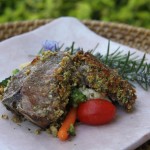
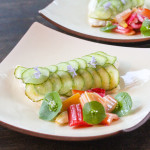
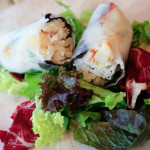
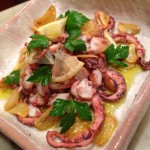




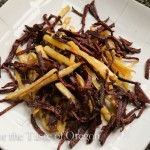


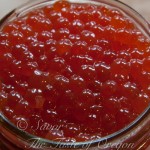


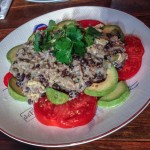

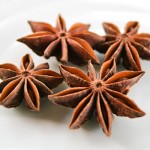
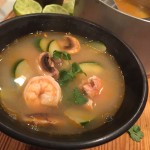





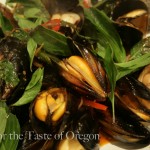
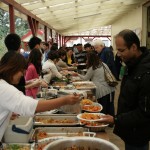





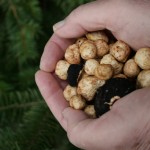
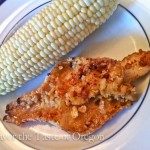



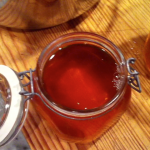





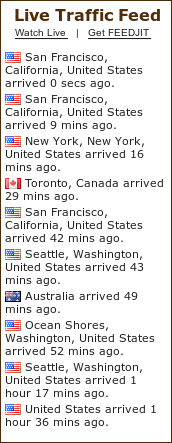





AMAZING! i am suspec to say something like that bcause i love ginger sauce. Congrats!